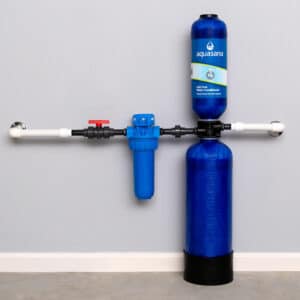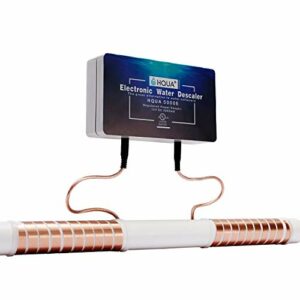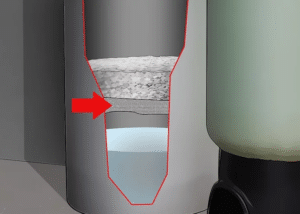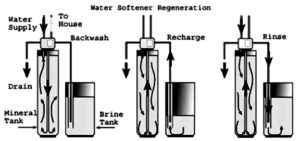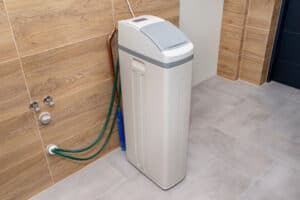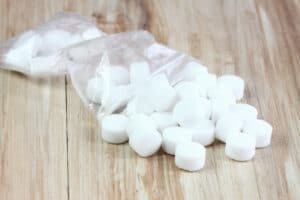While water softener systems are usually very dependable, occasionally, a unit will malfunction. One case of a malfunctioning water softener system that is more common than others is that it appears the system stops using the salt you put into it.
The evidence supporting that assertion is that your salt level never seems to decrease. Another indicator is that your water never softens and remains hard, metallic, or bitter tasting.
Fortunately, there are only a few possibilities when your unit stops using salt, and the problem has a simple remedy. The following will help you diagnose your problem and fix it.
Your System Has a Salt Bridge
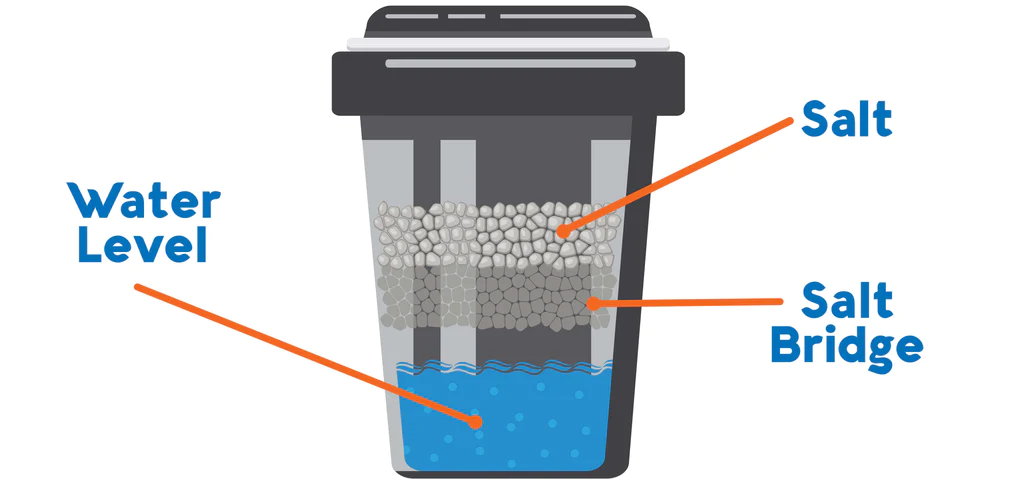
A salt bridge is more of an optical illusion than an actual problem with your system. Salt will occasionally crust over because of the relative humidity of the unit, forming a solid upper crust that makes it look like your salt level is not moving. In most cases, when this happens, the issue is actually the opposite of what it looks like is happening.
Your unit is likely still functioning correctly, but the salt bridge makes it look like your salt level never decreases. Your unit may be low on salt, and the system might be capable of functioning correctly, but because you are low on salt, it is not as effective. Sometimes, your unit might be out of salt, but you do not know because the salt bridge covers it up.
In either case, your water softener system probably is not producing soft water or is not producing fully treated water, so your water may appear to be untreated.
Salt Bridge Solution
The solution to a salt bridge is as simple as it sounds. You simply need to break up the salt bridge. Doing so will let you see how much salt your system has and how much it needs. The process of breaking up the salt bridge is just as simple.
Use a wooden rod, such as a broom handle, to gently push on the salt bridge until it collapses. Periodically check your tank’s perimeter to ensure that salt is not building up. When you see a crust forming, break it down the same way.
Avoiding a Salt Bridge
If your system is prone to salt bridges, avoiding them is not as simple as breaking them up. Areas with high relative humidity are prone to develop salt bridges as the salt becomes damp and cakes. A great example of what happens is the salt shaker you use for salting your meals.
If the salt shaker gets exposed to humidity or liquid, the holes in the shaker will crust over. Your tank is subject to the same process– it is just a larger hole to clog.
One way to avoid a salt bridge is to install a dehumidifier next to your system to lower the relative humidity. Another option is to switch to evaporated salt pellets.
Evaporated Salt Pellets
Evaporated salt pellets are pure sodium chloride derived from salt via refining. While this type of salt costs more, it is purer than regular salt crystals and generally will last longer than standard crystals. Another benefit of evaporated salt pellets is that they evaporate or dissolve slower than regular salt crystals.
Evaporating more slowly than regular salt crystals makes it more difficult for salt to cake together and form a crust. Generally, where salt crystals will start to cake when exposed to moisture, evaporated salt pellets will not, and the pellets themselves are too heavy to bond together strong enough to form a bridge.
Avoid Overfilling
A final way to avoid a salt bridge is to ensure you never overfill your brine tank. An overfilled brine tank can slow water flow through your system, providing the perfect environment for salt deposits to form. Once a salt deposit forms, it is just a matter of time before more salt builds up and salt layers get formed. Eventually, if the environment is right, a bridge will emerge.
Brine Tank Salt Mushing
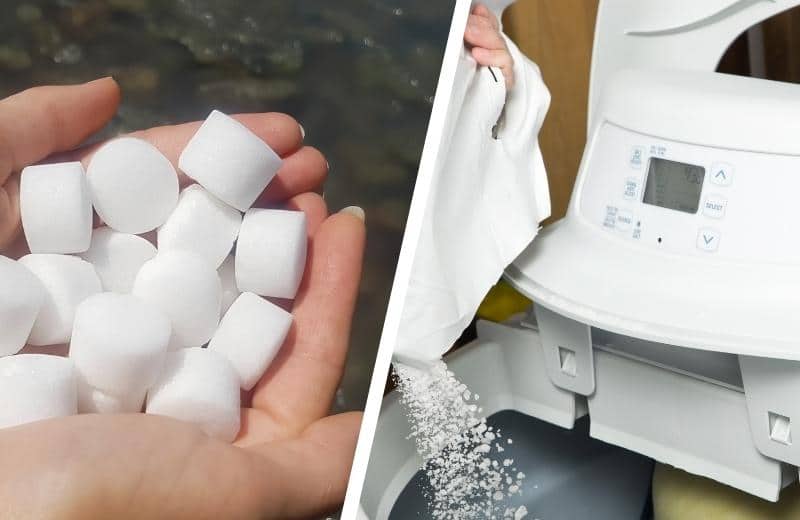
Salt mush is a residue that builds over time at the bottom of your brine tank. At first, it is paste-like and has a moisture content that ranges from slightly damp to almost liquid. To get an idea of what it looks and feels like, put some salt at the bottom of a glass. Add enough water to wet the salt but not so much that it starts to dissolve.
Stir the water around until the water has permeated the salt and a liquid paste has formed. Let the concoction set for an afternoon. What is left is the makings of salt mush.
The mush will be paste-like and damp or wet, yet it will have started the drying process. If you leave it out for a day or two, a shell will harden over the paste, and if you let it sit for several days, eventually, the salt will dry out and harden completely.
The same thing can happen in your brine tank, particularly if you use rock salt, which has minerals that can be hard to dissolve. The water from your tank compresses the salt at the bottom of the tank. Eventually, that paste-like substance is formed and hardened. When it stiffens up, it clogs the brine line, which prevents your system from using salt to soften your water.
Salt mushing can get created in several different ways. The most common are:
- Overfilling the brine tank
- Using rock salt versus recommended evaporated or solar salt
- A damaged grid plate
The ambient humidity of the room and temperature fluctuations can also factor in the formation of salt mush. Rapid increases or decreases in humidity can result in condensation on the side of the tank and the salt becoming damp before it gets exposed to the brine tank.
Both the humidity and the temperature fluctuations prime the salt for liquid saturation and create that paste-like substance. Add brine tank water weight to the mix, and your environment will be perfect for salt mush.
Salt Mush Solutions
Cleaning the brine tank is the best way to address the situation. Empty the brine tank, and use your hands to break the salt mush apart if you can. If not, you will have to wet the salt mush and scrub it until it dissolves. Once the salt mush is gone, if the problem is a broken grid plate, you will need to replace it. Refill your brine tank, and it should be good to go.
To avoid salt mush, watch your tank and look for residue buildup. If your system has a smaller brine tank, keep your eye on it because the residue will build up quickly. Never overfill your brine tank and let the salt level deplete to one-quarter of the recommended amount. When adding salt, only fill to slightly below the recommended level.
Another tip that can help you avoid salt mush is to use solar or evaporated salt only. Run a dehumidifier or air conditioner in the room with the brine tank to ensure the ambient temperature is constant and the humidity level is low.
Final Thoughts
Unless you constantly check your water softener system, you will experience issues from time to time. One issue you might confront is your system not transferring enough salt to make a difference in your water quality. If you look for salt bridges and mush and take measures to avoid both, your system will be reliable and produce consistently soft water.

